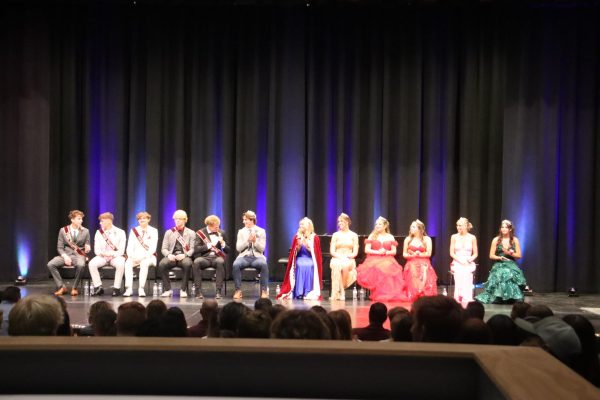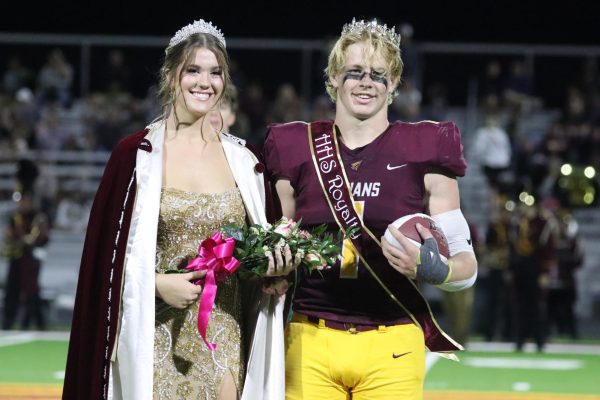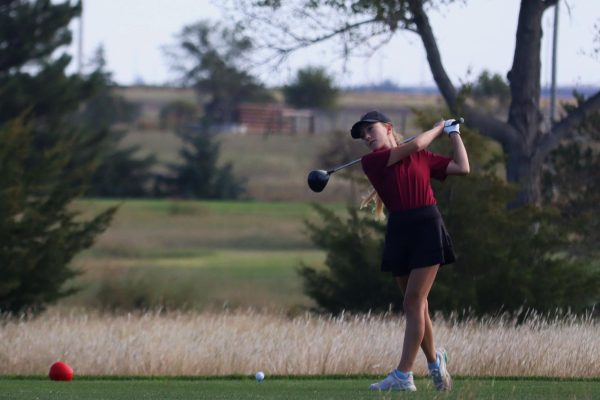Special education students add music to curriculum
On an average school day, students go about their routine schedule that consist of four classes in one school day. While classes are different, the schedule is the same for most students.
Special Education students have a slightly different routine, participating in activities such as sorting mail in the office and swimming. This year, however, there is a new class offered to these students.
Sixteen students are currently enrolled in the new Special Education music class, which is taught by band director Craig Mantueffel.
“Currently, I am teaching a unit on marching band,” Manteuffel said. “This includes the basics of marching and maneuvering, breathing gym, instrument identification and rhythm exercises.”
Many recent studies have said music has multiple benefits. It works to improve brain development and assists in enhancing other skills such as math, reading and science.
“Music education is a higher level learning that helps stimulate the brain,” Manteuffel said. “There has definitely been an improvement in the students’ abilities since the start of class. It’s been awesome to see and hear the students improve in every aspect of what is being taught. The students are very attentive and the paras have done a great job assisting in the classroom.
“I believe every student deserves the chance to learn and enjoy music,” Manteuffel said “I want to teach all students to appreciate music so they can attend music concerts and enjoy and understand what they are hearing.”
Three special education classes take part in the music class offered. Jeana Dinkel, Debra Weatherbee and Andrea Zody all take students to the class.
Special education professional paras accompany the students to the class.
“It’s making them happy,” para Myrna LeCount said. “They have enjoyed it because they can interact. When we have marched they have been able to participate. When they have worked on their rhythm and beats they have participated, and it isn’t an individualized activity. All the parts have made a whole.”
Just like students learn different ways in a classroom, such as orally or visually, the special education students are similar as each person learns in a different way.
“It’s interesting,” LeCount said. “They may not be able to tap the rhythm with their hands, but if you watch their feet they might be tapping it out that way. Or maybe their head will be moving to the rhythm.”
Not only is the music helping the students within the classroom, it is also assisting in other aspects of life.
“I think it gives them a sense of feeling or belonging into the larger picture,” LeCount said.
Music therapist JoAnn Jordan said the effect of music on the brain is still not fully understood.
“Music affects the brain in a very global way that we are still discovering,” Jordan said.
The structure of music itself is generally what therapists such as use.
“I don’t necessarily care if someone plays piano well unless that is a desired goal,” Jordan said. “The goal is usually a nonmusical goal. By manipulating and making use of the different elements of music we are able to focus on different aspects of what we want to happen.”
While all elements of music are used, a strong emphasis is placed on rhythm, tempo and dynamics.
“If you were to have someone play a rhythm to a common phrase like ‘An apple a day keeps the doctor away’ without words, it is a little more complicated,” Jordan said. “I am making use of things that people know rhythmically and can be successful. A lot of times I am working stimulating self-esteem, memory and engaging people so they are focused more on the moment.
“I use tempo to help structure the form of my sessions. Where someone is going next is going to affect what kind of tempo I am using at the end. If I know someone will be taking a nap or going to bed, I may tend to try to do something that is more calming at the end.”
Jordan said she sees both short and long-term changes form from her sessions.
“A lot of the people in the group come with a flat asset and they tend to leave a lot brighter, cheery, smiley and engaged,” Jordan said. “Long-term varies on the person. In general, most of the clients are dealing with dementia diagnoses, and they may not know my name, but most of them can remember me in music.”
14awalters@usd489.com







